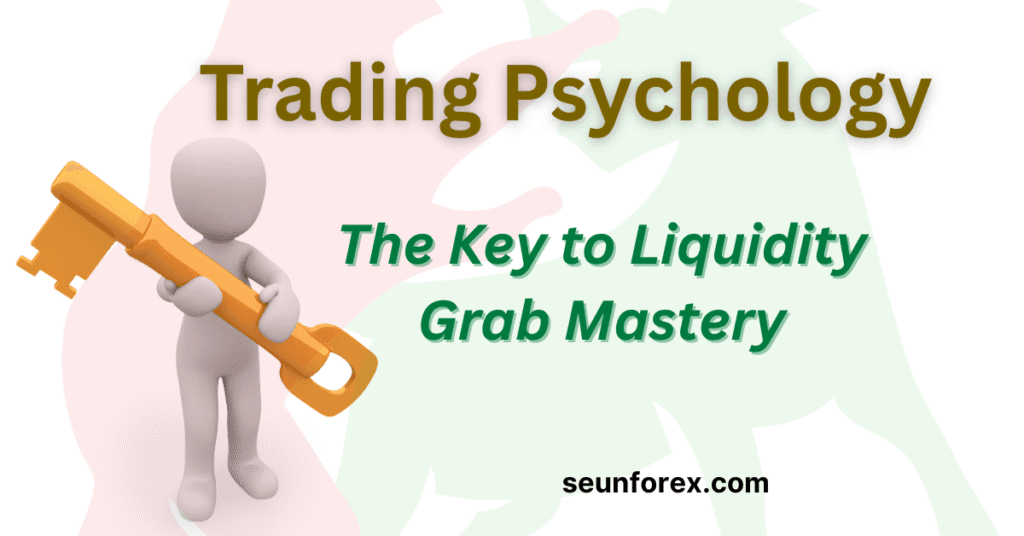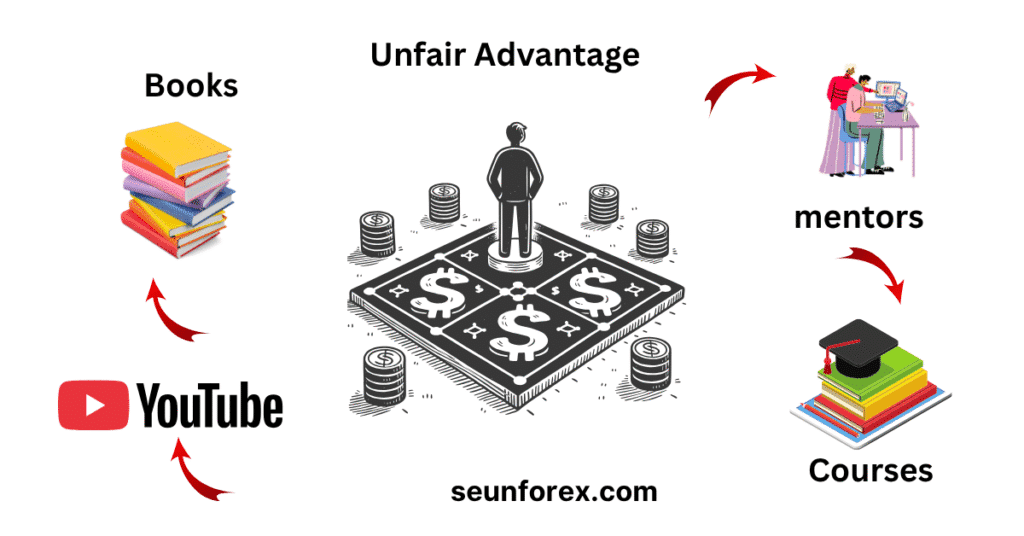
🍀 Are Pro Traders Just Lucky?
The novice asks wide-eyed:
“Why are professional traders so lucky?”
“They buy, the price goes up, and they exit with a profit. Every. Single. Time.”
Here’s the truth: what many beginners call “luck” is often a Liquidity Grab in the market — a strategic move by large players that shakes out weak hands before trends continue.
Ah, the eternal illusion — that pros have a secret signal or divine favor from the Market Gods. But after even five minutes in real trading, you quickly learn:
No one wins consistently by luck. Not even the best. And definitely not Gordon.
So… what makes professionals seem lucky? The answer lies in understanding Liquidity Grab mechanics, controlling risk, and mastering trading psychology.
🎛️ What You Can’t Control vs. What You Can
In trading, you cannot control:
- Where price will go after you enter
- What Jerome Powell says at 2:00 PM
- Or when Elon Musk will randomly tweet a Dogecoin meme
But you can control:
- The market you choose
- Your risk exposure
- Your position size
- Your entry timing
- How you manage the position
- And when you exit
That’s where the edge lives. Not in prediction — in precision.
⚽ A Story You Already Know
It’s match day: Team A vs. Team B.
Team A has three World Cup players, playing at home, stadium packed. Team B just landed after a 10-hour flight.
Fundamentals: 1–0 for Team A.
John, the novice bettor, sees the setup. “Easy double!” he grins, going all-in.
Gordon, the pro, watches silently. Not committed yet. He knows the game isn’t won in the opening narrative.
Minute 45: 1–0 for Team A. John’s fist-pumping.
Minute 60: Red card for Team A. Minute 65: Team B scores. Minute 70: penalty for Team B. Minute 75: Gordon places a bet — on Team B. Risk 2% to make 6%.
No emotion. Just math, logic, and edge.
🧠 Why Gordon Wins: Mastering Liquidity Grab
Gordon loves Team A. But he doesn’t let nostalgia blow up his account. He waits for confirmation, understanding that large players often trigger a Liquidity Grab to shake out novice traders. He bets only when the risk-reward is favorable and sticks to his process, applying strict risk management at every step.
According to Investopedia, liquidity is “the ability to quickly buy or sell an asset without significantly affecting its price.” This is a critical factor in how professional traders anticipate Liquidity Grabs. By studying these principles, Gordon can spot when the market is about to sweep weak hands, allowing him to act with precision rather than emotion.
John? Devastated. He blames the weather, the refs, or the universe. He falls victim to emotional trading, ignoring subtle market microstructure signals that pros watch closely.
James and Robert? Confused or euphoric, reacting impulsively. Their lack of awareness in trading psychology leaves them exposed to the whims of the market.
Only Gordon walks away composed. Another trade. Another step in his compounding journey. He recognizes that understanding Liquidity Grab dynamics and maintaining discipline — principles explained in detail by Investopedia — is what separates consistent winners from the lucky-looking amateurs.
📈 The Real Secret of “Lucky” Traders
Gordon isn’t lucky. He’s disciplined. He only looks lucky because he:
- Has a process
- Respects risk
- Waits for edge
- Understands probability
- Controls emotion
- Plays the long game
Winning or losing doesn’t define him. Consistency does.
🧘 Be Like Gordon
If you want to succeed in trading:
- Stop idolizing big winners on Twitter
- Stop copying random trades in chat rooms
- Stop trading what you don’t understand
- Start building your framework
- Start managing your risk
- Start trading your setups, not your emotions
🎓 Today? You Already Have an Unfair Advantage

You have YouTube, books, courses, forums, and mentors — all a few clicks away.
One real rule:
Work hard until you develop intuition. Then work even harder.
Because in this game… Hard workers attract luck. Opportunity loves preparation.
Building Your Edge – The Framework of Consistency
🛠️ Step 1: Know Your Market
Before you place a single trade, you must know where you’re playing. Every pro focuses on a specific market — stocks, forex, crypto, commodities — and masters it.
Ask yourself:
- Which market fits my personality and time horizon?
- Where do I understand the rules better than 90% of participants?
- What instruments provide clear liquidity and manageable spreads?
Edge begins with focus. Jack-of-all-trades traders rarely master one.
📊 Step 2: Develop Your Trading Plan
A trading plan is your safety net against impulsive decisions. Gordon doesn’t guess — he follows a blueprint.
Your plan should include:
- Entry rules – Conditions that must align before you trade.
- Exit rules – Profit targets, stop-loss strategies, and contingency exits.
- Risk per trade – Usually 1–3% of your capital.
- Position sizing – Adjust size based on confidence, volatility, and risk.
- Review process – Journaling and weekly performance analysis.
Without a plan, luck masquerades as skill. With a plan, skill becomes repeatable.
⚡ Step 3: Identify Edge Through Probability
Trading is a numbers game. Your edge is the long-term advantage that tilts probability in your favor.
- High probability setups – Look for chart patterns, trends, or market inefficiencies you can repeatedly exploit.
- Risk-reward ratio – Aim for trades where potential reward exceeds risk (2:1 or 3:1 is standard).
- Statistical edge – Over 100 trades, your system must generate consistent returns.
Remember: One winning trade doesn’t prove edge. Consistency proves edge.
🧮 Step 4: Risk Management Is Everything
Even a brilliant strategy fails without risk control.
- Use stop-losses religiously.
- Avoid over-leveraging — it’s a quick path to ruin.
- Limit exposure to correlated trades.
- Protect your capital before seeking profits.
Tip: Losing 10% is recoverable. Losing 90% is often terminal. Risk management keeps you in the game.
🧘♂️ Step 5: Master Emotional Discipline
The market tests your psychology more than your analysis. Fear, greed, FOMO, and revenge trading destroy accounts.
- Trade your plan — not your feelings.
- Accept losses as the cost of doing business.
- Celebrate consistency, not individual wins.
Gordon never gets euphoric after a win, nor crushed after a loss. Emotion is a variable you cannot control — discipline is your only weapon.

🔍 Step 6: Pattern Recognition and Adaptation
Pros recognize recurring market behaviors. Some patterns appear across charts, markets, and timeframes:
- Support and resistance zones
- Breakouts and reversals
- Volume spikes
- Momentum shifts
Adaptation is key — what works in one market condition may fail in another. Successful traders learn when to step back and when to act.
📈 Step 7: Compounding Knowledge & Capital
Trading isn’t about hitting “the jackpot.” It’s about slow, steady growth and compounding your edge over time.
- Reinvest profits cautiously — small, consistent gains grow faster than one-off big wins.
- Avoid chasing losses — emotional reactions can wipe out hard-earned progress.
- Gradually scale up as confidence, skill, and understanding of market mechanics improve.
Even a modest 5% consistent monthly gain compounds faster than the occasional 50% jackpot. Gordon understands the power of incremental progress, and how discipline and risk management multiply over time.
For traders struggling with indecision or overthinking their moves, mastering this compounding mindset is essential. Strategies for staying disciplined and acting decisively are outlined in our guide on fixing trading analysis paralysis, which helps transform knowledge into tangible capital growth.
Additionally, understanding market microstructure is key to compounding success. According to Bookmap, market microstructure — the way orders are executed, liquidity is provided, and price formation occurs — is a core concept behind recognizing Liquidity Grabs, allowing traders like Gordon to enter and exit positions more effectively.nizing Liquidity Grabs, allowing traders like Gordon to enter and exit positions more effectively.
💡 Step 8: Continuous Learning
Even the best traders read, review, and refine. The market evolves — so should your approach.
- Study past trades for patterns and mistakes
- Read books, papers, and follow credible traders
- Test new strategies in small increments
- Stay humble and curious
Knowledge compounds just like capital — small daily gains create long-term dominance.
⚔️ Step 9: Build Your “Unfair Advantage”
What makes you unbeatable isn’t a secret indicator or a trading robot. It’s your unique combination of skill, discipline, and process.
Your edge = Your rules + Your patience + Your discipline
Luck is irrelevant; preparation converts opportunity into results. Others chase Holy Grails, but you play your game by mastering your own framework.
If you sometimes struggle with decision-making or find yourself overanalyzing trades, check out this guide on fixing trading analysis paralysis. Applying these strategies can help you act decisively, stay disciplined, and strengthen your unfair advantage.
🔑 Step 10: Start Trading Your Edge Today
- Pick a market
- Define your entry, exit, and risk rules
- Test in small size
- Journal every trade
- Refine and repeat
This is how professionals dominate while appearing lucky. You already have everything you need — just execute with patience and precision.
Closing Thoughts: Stop Looking, Start Using
Stop chasing mythical Holy Grails. The edge isn’t in a formula or insider tip. It’s in you, your discipline, your plan, and your ability to manage risk.
Gordon isn’t lucky. He’s consistent, prepared, and disciplined. You can be too.
Every trade is a microcosm of life: preparation meets opportunity. Control the controllables, respect the probabilities, and let compounding do the rest.
Luck is just skill in disguise. And your skill? It’s already within reach.